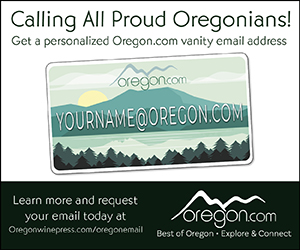Jan Iverson: Learning how we can take a step closer to each other
Standing in the crowd along Adams Street holding up my homemade sign of protest, I was in a good position to study the faces of the people driving by — especially since the signal at Fifth often slowed drivers to a crawl.
What I tended to see on the faces of the people honking in support and giving a thumbs-up was hope. They seemed to sit a little straighter and look around with more curiosity as they proceeded along the protest route.
On the faces on the thumbs-down folks, I sensed withdrawal under their seeming disgust. This is not in any way an indictment of their humanity. It is rather a feeling I had that these naysayers were, once again, feeling misunderstood and disrespected.
I could see how our very presence was deepening the divide between us. It made me wish we could all turn our signs around and reveal a more inviting message: “Let’s talk.”
But talking across an ideological gap when fear is riding high is beyond difficult. I know from decades of doing therapy with distressed couples that bridging difference without a facilitator is rarely effective.
Who are our facilitators these days? Who can help us learn to talk — and importantly, listen — across ever-growing divides?
It’s natural to look to our leaders for guidance in times like these. But our leaders are by necessity politicians, and politicians got where they are by being very, very competitive. Their priorities, therefore, rarely include collaborative win-win strategies.
There is a straightforward skill set, aptly named “adversarial collaboration,” that we can employ when we come face-to-face with folks who disagree with us. Attributed to the late psychologist Daniel Kahneman, this strategy enhances our ability to cooperate with others even when committed to our positions.
Adversarial collaboration starts us moving by sidestepping the rigid or defensive thinking that often precipitates hostility and directing us instead toward a cooperative curiosity about how the other side of the divide might be better understood. This strategy approaches difference with the expectation that, if handled correctly, dialogue across a difference can be generative and expansive rather than confrontational or defensive.
Though neither a panacea nor quick fix, adversarial collaboration represents a lovely way to habituate to gentle curiosity across difference. Just by agreeing to participate in the process we lower the temperature with the expectation of mutual respect and a willingness to privilege fairness and creativity over winning.
At its most basic, when we engage in adversarial collaboration, the wiser parts of our minds recognize that our ideological views are just the result of ideas we have about how the world works. Indeed, the origin of the word reinforces this belief: An ideological view is simply a story about a fact pattern someone has observed and thinks is meaningful.
In that context, political positions are no longer seen as sacred, but as a starting point for compelling discussions.
Protests, while perhaps divisive, are important. They are a way of voting between elections — informing our representatives in Washington, D.C. about how many there are of us out here and what we need them to do on our behalf.
But maybe across Adams Street we could have a counter-protest. And maybe in the middle of the street could be people with posterboards and pens capturing the ideologies where we all agree.
To wit: Our country is young. It is a great experiment in how to run things. It would be good if this experiment could continue. Moving too far right or left is probably not a good idea. Let’s all take one step toward one another.
Bridging the gaps of dissonance
Adversarial collaboration, a gap-bridging technique originally introduced as a research design tool by psychologist Daniel Kahneman, can be used to enhance our ability to establish productive dialogue with people who see things very differently. Here’s how I’ve adapted his strategy for my work with clients:
1. Start by clarifying that both stakeholders are willing to put in a good faith effort to investigate how each position can contribute to a deeper understanding of the situation at hand. By committing to a bilateral, curiosity-based stance, everyone can more easily move away from a defensive (read: hostile) one.
2. Spell out extenuating circumstances that may affect communications such as scope, importance, urgency, etc. In other words, agree on the size, shape and time constraints of the situation.
3. Give each side of a split both permission and encouragement to state their position as boldly and unapologetically as possible. If one side feels free to describe while the other side commits to deeply listen, all kinds of communication pitfalls can be avoided (hyperbole, lying, disorganized thinking, etc.) Absent the need to self-justify, each presentation becomes invigorated by enthusiasm rather than obscured by guardedness, wariness, dishonesty or aggression.
4. The tasks of non-speakers, therefore, are to listen carefully and to ask thoughtful questions–without attacking–while waiting for their turn to enthuse over their own perspective. This step is clearly the most difficult. The urge to rebut what you are hearing can nearly overwhelm your ability to hear. It helps to focus on the moral capital (to use Jonathan Haidt’s concept about the glue that holds communities together) that you are building in your community by offering attentive listening to those who disagree with you.
5. After both speakers have presented, generate a pros and cons list for each position. That step works best when the speaker for each position lists the cons, and the listener the pros. Again, care must be taken to remember that each participant seeks to maintain a strong desire to learn something rather than a strong desire to be proven “right.”
6. Once the advantages and disadvantages of each strategy have been captured, the participants can reassess the original problem. What are the dangers of continuing disagreement? Are we willing to not win if the price of not moving forward is high enough? Is a draw acceptable if the stakes are low enough? Wise collaborators look for areas of agreement, novel options, methods for determining if one way of thinking is better than another in this instance and so on.
7. If adversarial collaboration is being used to solve a problem, the goal is to design something you each agree to try in an effort to resolve the situation. The implication being that there is something beyond where we each are that is worth moving toward. The goal is data collection through novelty rather than shutting down through retreat and re-entrenchment.
8. If adversarial collaboration is being used to reduce disrespect, the goal is to willingly explore how carefully and thoughtfully both parties arrived at their respective positions. For most of us, once we understand how a person has come to value what they value, their position becomes more about them and their life and less a threat to how we have chosen to view things.







Comments
treefarmer
As a retired therapist I can appreciate the suggestions and observations in this piece. Unfortunately the nature of our national division goes beyond logic and is fed a constant diet of odious lies. The power mongers have recognized and successfully employed the tactics of hate and misdirected grievance to solidify the divide. May people recognize and heed the call for finding middle ground before it is too late. Divided we fall, our fragile democracy is circling the drain.